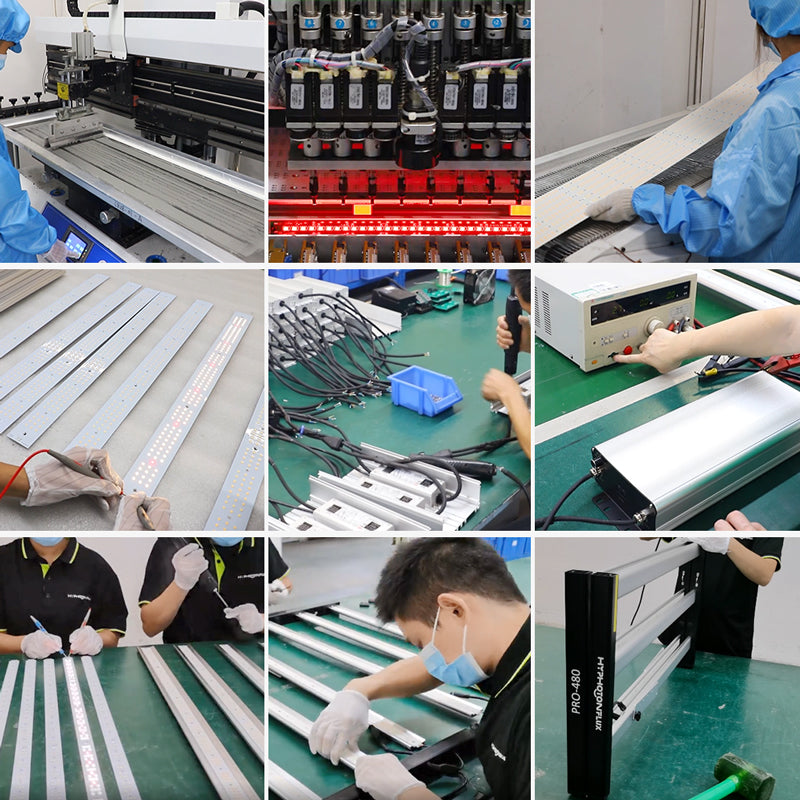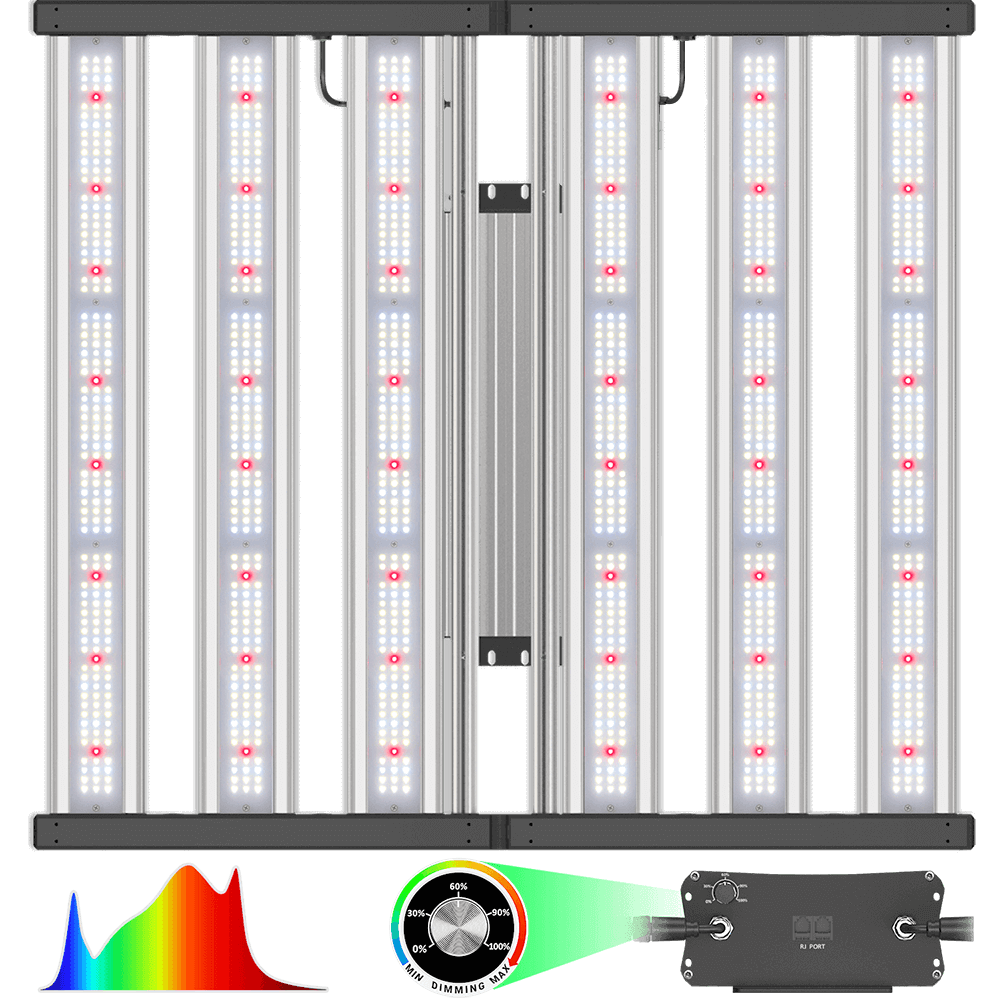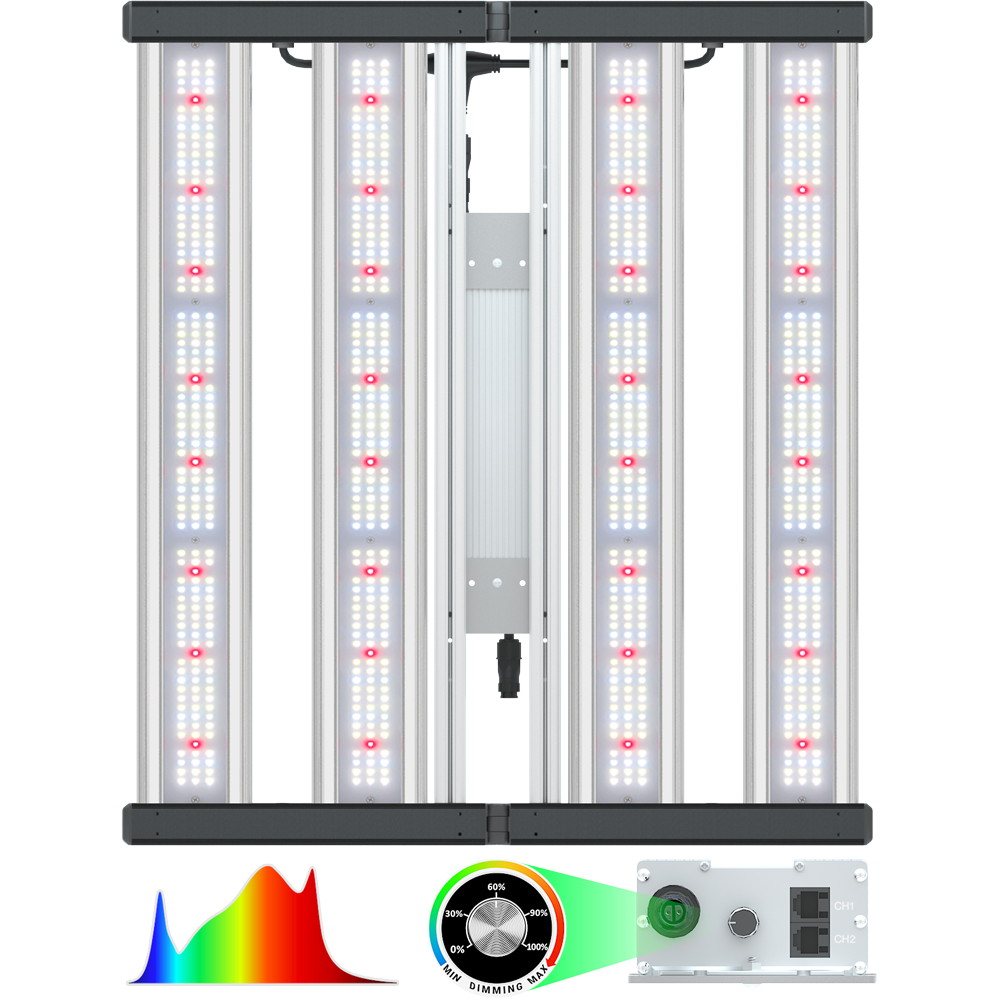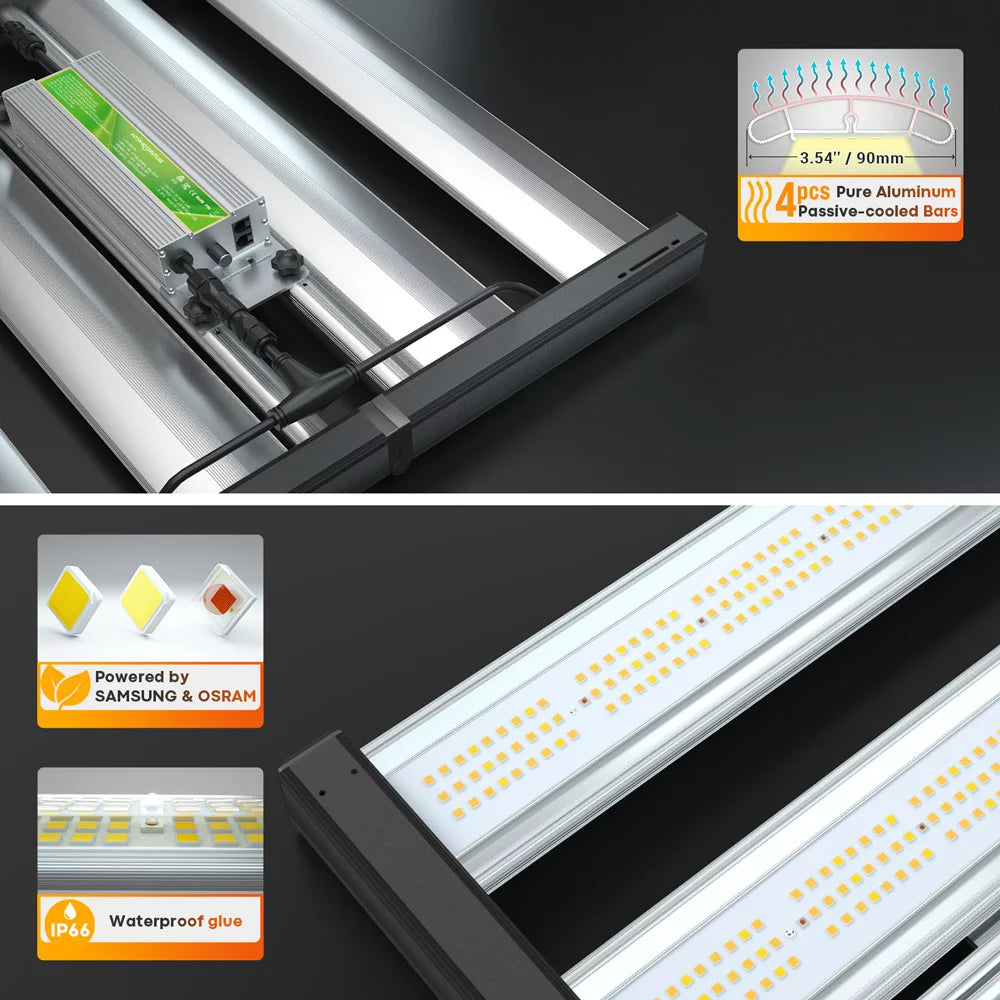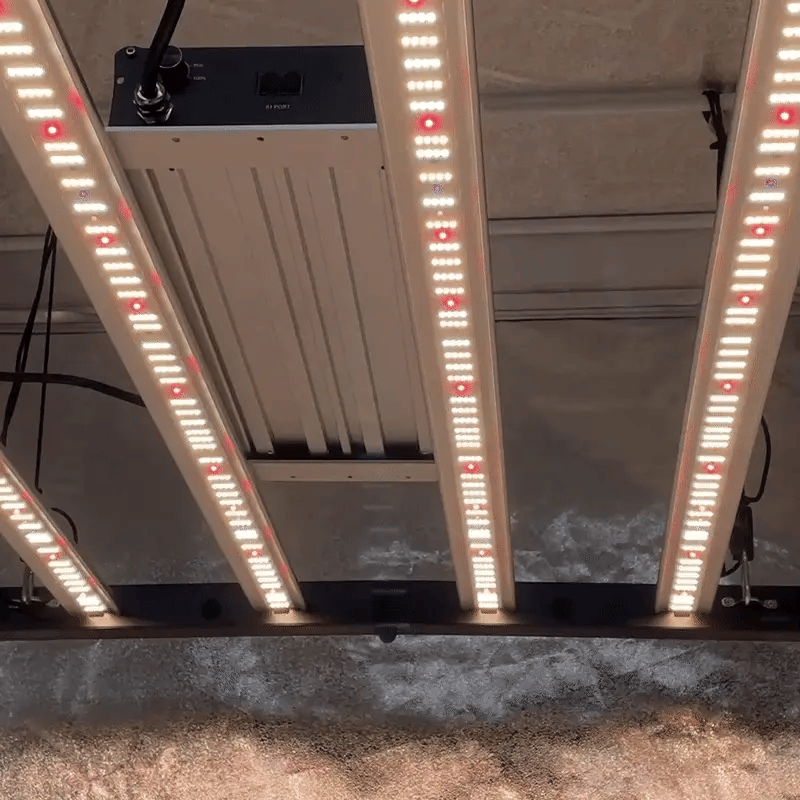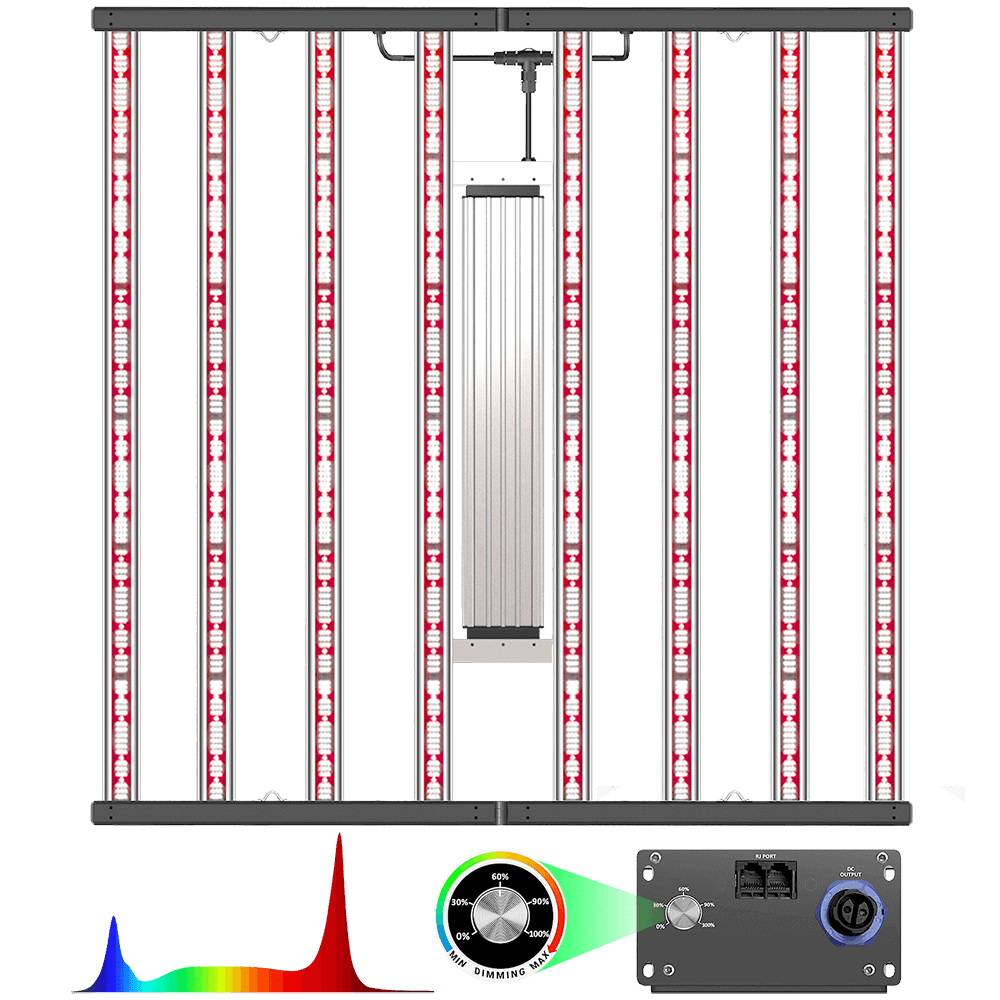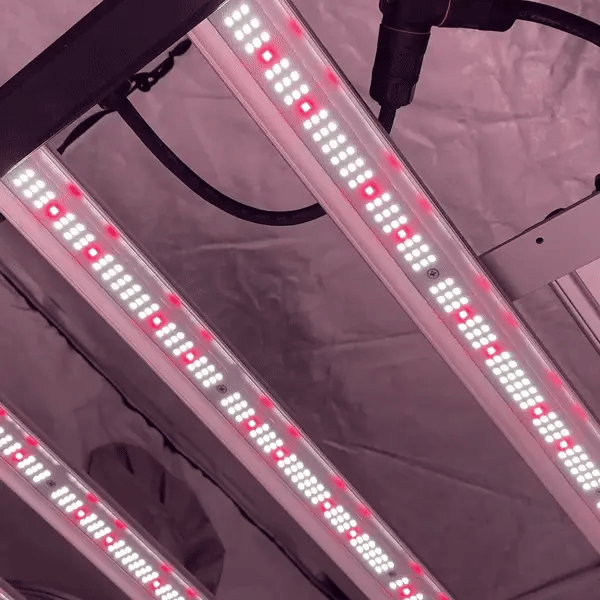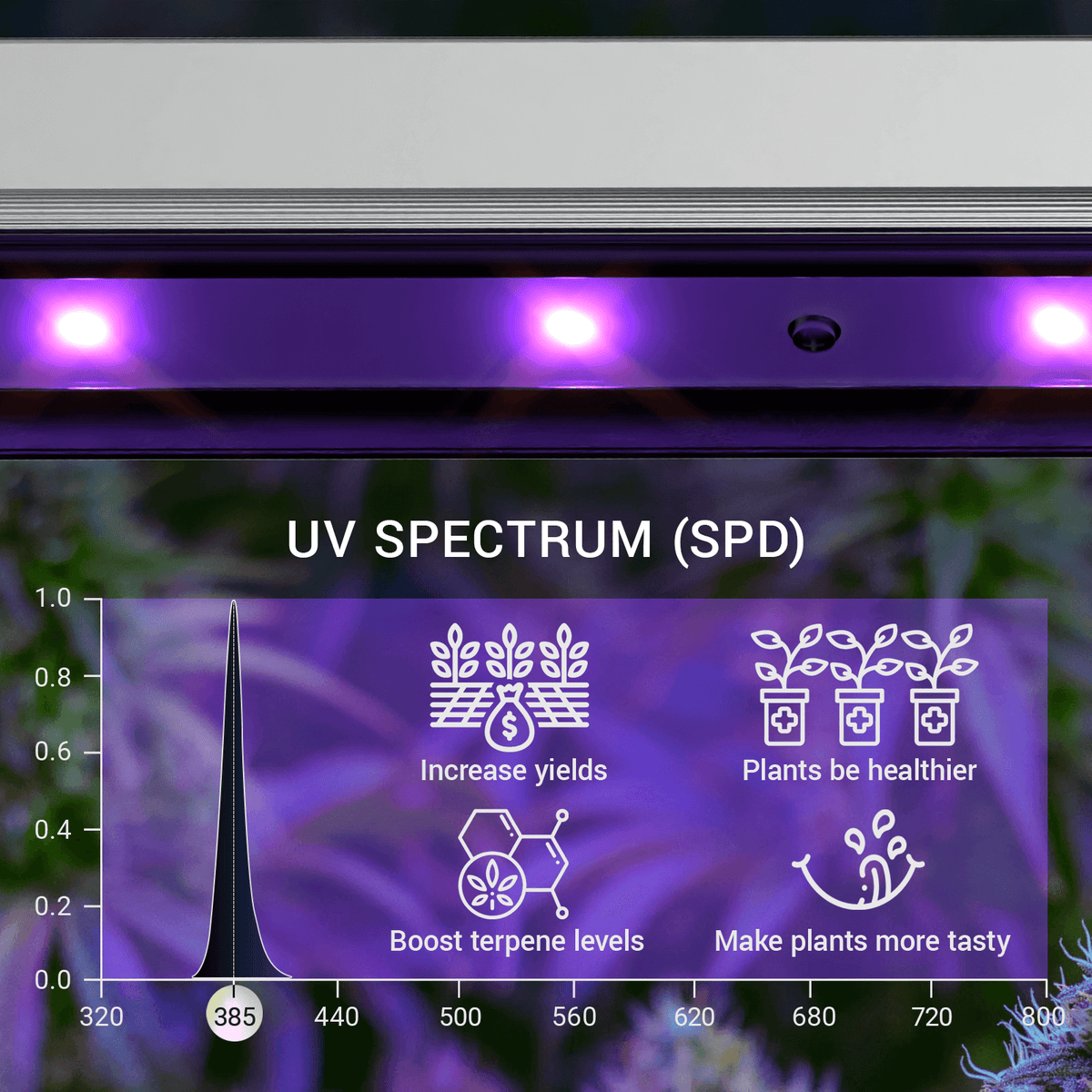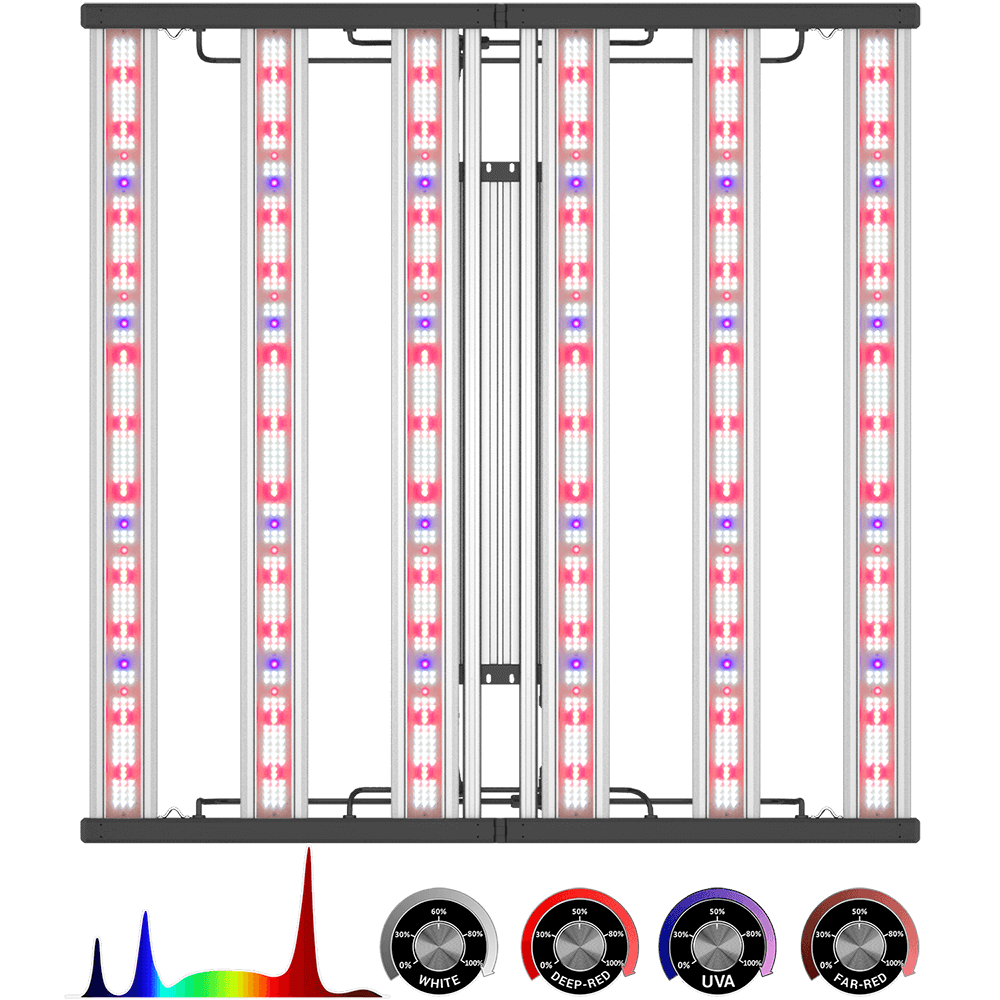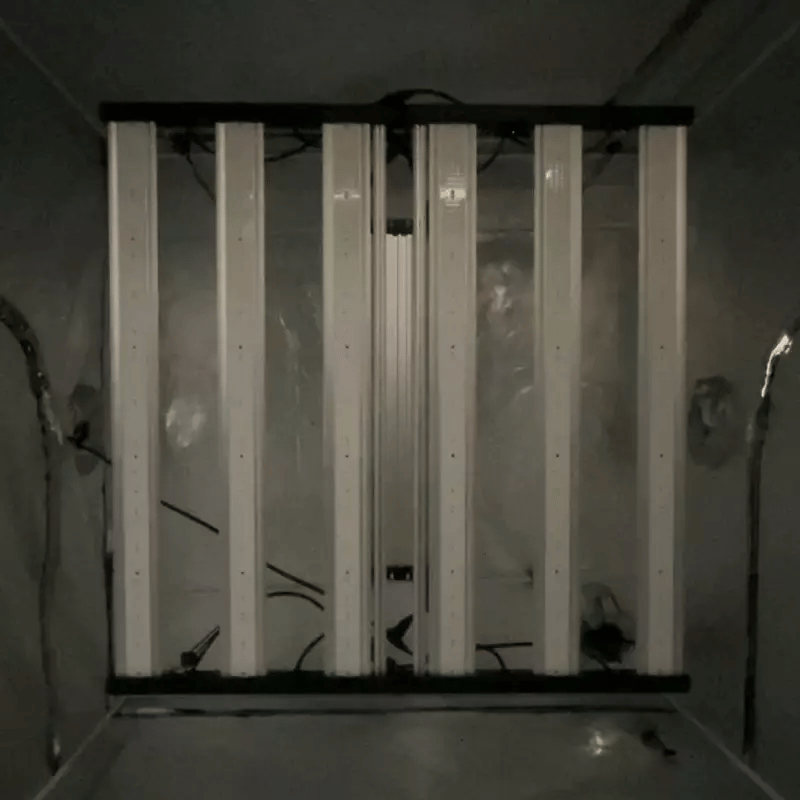Can your lights be used to grow other plants besides cannabis?
✿ After years of development, LED has become the best choice for the majority of growersDue to its cost, growers often use LEDs to grow plants with a high ROI like cannabis. So here's a question: can I use my light to grow other plants?
✿ Today, let's think about and discuss this question with comparing the three most common vegetables in American households: tomatoes, peppers and lettuce

Grow light spectrum for cannabis
✿ The grow light spectrum for Cannabis varies when compared to other plants as growers are focused on maximizing yields, controlling levels of THC and other cannabinoid production, increasing flowering, and to maintain overall uniformity.
Aside from visible colors, Cannabis responds especially well to wavelengths just outside of the PAR range. Therefore, an added benefit of using full spectrum LEDs is the ability to use specific doses of ultra-violet wavelengths (100-400nm), and far-red wavelengths (700-850nm) outside of the PAR range.
✿ For example, an increase in far-red (750nm-780nm) can help stimulate Cannabis stem growth and flowering – something growers want, whereas necessary blue light in minimal amounts, can prevent uneven elongation of stems and leaf shrinkage.
✿ So, what’s the ideal grow light spectrum for Cannabis? There’s no single spectrum since varying light exposure promotes certain plant morphology during different stages of growth. In general, growers prefer spectrum with higher levels of blue and red light and less yellow-green light
Grow light spectrum for tomatoes and peppers
Since tomatoes and peppers are sun-loving plants, the spectrum is similar to light for growing cannabis plants. And you should know there is no CBD and THC, so the broad spectrum is good to grow tomatoes and peppers
Grow light spectrum for lettuce
✿ For green plants, light is an important environmental factor for life and is involved in the regulation of growth, morphology, and metabolism . LED are new illuminants with advantageous properties, including energy conservation, long life, small size, light weight, and high light efficiency. These advantages make LEDs a perfect light source for artificially regulating crop growth and development. Recent studies have shown that the combination of red and blue light serves as a highly efficient light source for promoting lettuce growth. And adding green, purple, and far-red light had a negative effect on lettuce growth
✿ For plant growth, the spectrum of light is very important. Different plants need different spectrums of light. Besides, light intensity, heat and humidity are also factors we need to consider, so have a research on the spectrum of your light before you use it to grow anything


